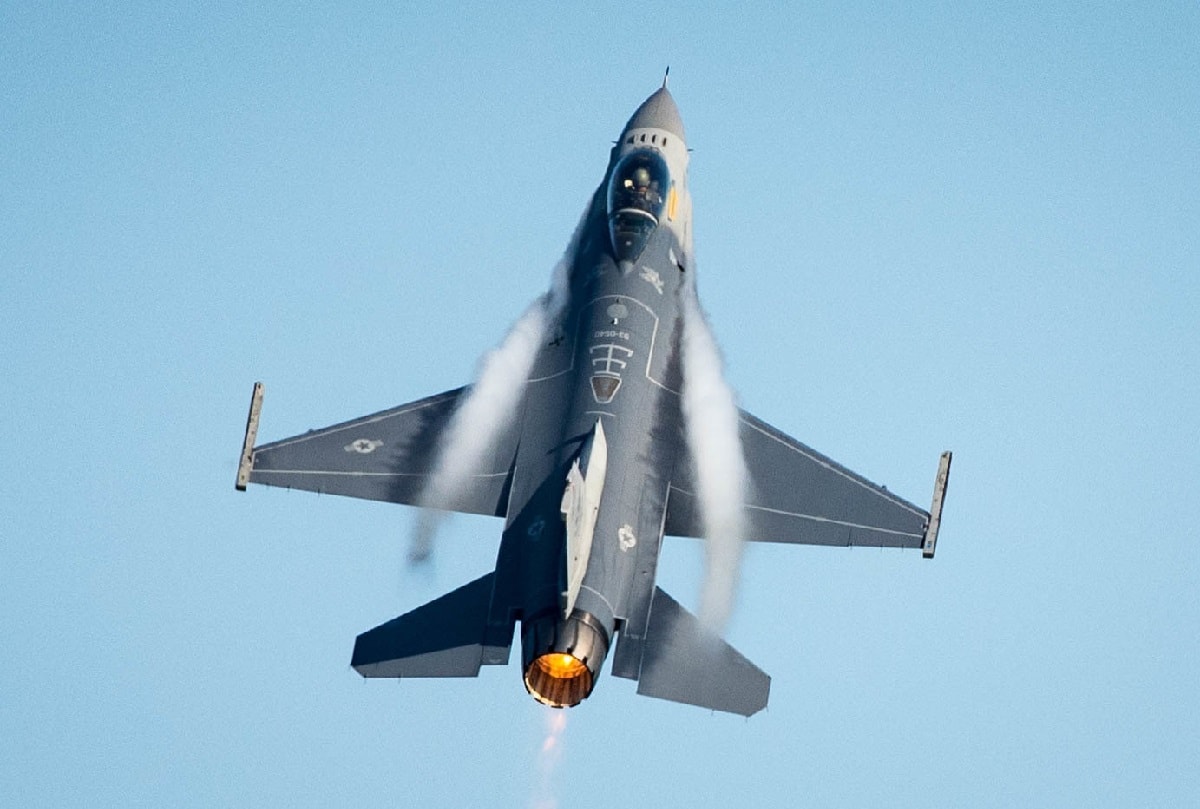It might just be in the UAE – The United Arab Emirates’ (UAE) F-16E/F variant is arguably the most sophisticated and technologically advanced fourth-generation fighter jet in the world. Also known as the F-16 Block 60 “Fighting Falcon,” the airframe was developed specifically for the UAE. The Lockheed Martin fighter features several advanced systems, including powerful GE F110 engines, a Northrop Grumman APG-80 AESA radar, an integrated infrared search and track system, and a cutting-edge electronic warfare capability.
Once the most capable fighter deployed by a Middle Eastern country when it first entered service, the aging Falcon platform remains a formidable force in the region.
The F-16 Desert Falcon – Advanced Variant Flies High
The UAE first announced that it had selected Lockheed Martin’s F-16E/F variant as its advanced fighter airframe in the late 1990s. After nearly two years of negotiations, the UAE officially signed on to acquire the Falcon in 2000. Both the UAE and the U.S. contributed to the fighter’s research and development, and the first Desert Falcon flew in 2003. The UAE alone contributed $3 billion to the Falcon’s development and received its first airframe in 2005. UAE’s Air Force is comprised of 55 single-seat F-16Es and 25 twin-seat F-16Fs. The aging fighter is currently undergoing a range of upgrades.
The UAE variant is equipped with several enhancements that make it the ultimate F-16 variant. Similar to its successors, the Falcon’s cockpit features large flat panel displays and a wide heads-up display with holographic video projection. While this layout is common among the newer fifth-generation fighters, it was unprecedented at the time of the Falcon’s inception. The jets are also equipped with sophisticated data links and highly secure communications systems. Its General Electric turbofan puts out nearly 3,000 pounds more thrust than the Block 50’s FII0-GE-129. This engine remains the most powerful ever incorporated into a fourth-generation airframe and ultimately helps make up for the Falcon’s greater weight.
Additionally, the F-16 Falcon’s Northrop Grumman sensor is an integrated platform that hosts an internal targeting and navigation system. The Falcon’s advanced sensor suite provides the pilot with unparalleled situational awareness advantages, making it easier to make room for long-range weapons to be introduced. According to The Drive, the “F-16, which is something of the hallmark of multi-role fighters, being able to perform multiple modes, such as air-to-air and air-to-ground, simultaneously and seamlessly equals a massive leap in capability and situational awareness.” The fighter’s Falcon Edge Integrated Electronic Warfare Suite (IEWS) can geolocate threats, giving the jet the capacity to quickly target them with precision-guided munitions.
One of the F-16 Falcon’s most unique modifications is its Internal FLIR Targeting System (IFTS). Derived from Northrop Grumman’s AN/AAQ-28 LITENING targeting pod, this infrared targeting and navigation suite provides “stabilized mid-wave infrared and electro-optical video feeds, as well as laser range-finding, spot tracking, pointer, and targeting functions.” The IFTS system can be utilized in air-to-air searches and for other identification purposes, although its main function is for air-to-ground applications.
The Falcon’s litany of modifications has elevated the fighter’s role in the UAE’s Air Force, representing the most sophisticated F-16s in the world, the UAE’s Desert Falcon fleet should not be underestimated.
Maya Carlin is a Middle East Defense Editor with 19FortyFive. She is also an analyst with the Center for Security Policy and a former Anna Sobol Levy Fellow at IDC Herzliya in Israel. She has by-lines in many publications, including The National Interest, Jerusalem Post, and Times of Israel.

